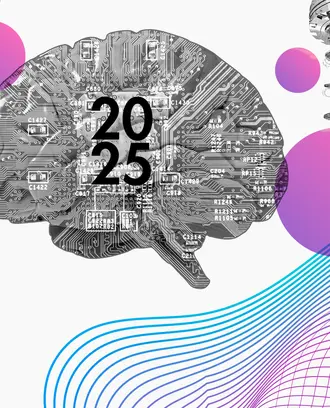Credit: hqrloveq / iStock
Federal spending was responsible for the 2022 spike in inflation, research shows
Inflation is difficult to control. Its cause is often even harder to pinpoint.
In attempting to understand the 2022 spike in inflation that followed the pandemic, some policymakers — up to and including President Joe Biden — blamed shortages in the supply chain. But a new study shows that federal spending was the cause — significantly so.
“Our research shows mathematically that the overwhelming driver of that burst of inflation in 2022 was federal spending, not the supply chain,” said Mark Kritzman, a senior lecturer at MIT Sloan.
In writing “The Determinants of Inflation,” Kritzman and colleagues from State Street developed a new methodology that revealed how certain drivers of inflation changed in importance over time from 1960 to 2022.
In doing so, they found that federal spending was two to three times more important than any other factor causing inflation during 2022.
Specifically, their results showed that:
- 42% of inflation could be attributed to government spending.
- 17% could be attributed to inflation expectations — that is, the rate at which consumers expect prices to continue to increase.
- 14% could be blamed on high interest rates.
Kritzman said that using government stimulus money to help the economy rebound during the pandemic made sense, given the unprecedented circumstances. “People really didn’t know if we were going to have a 1930s-type depression, so the government erred on the side of more stimulus than less stimulus,” he said.
“I don’t judge that to be a bad thing to have done, but it did cause this big spike in inflation,” Kritzman said. “What was surprising is not just that [the driver] was federal spending but that it was so overwhelmingly federal spending.”
Methodology
The authors arrived at their conclusion by using the Mahalanobis distance statistic, which has been used in a range of projects, from measuring turbulence in the financial markets to detecting anomalies in self-driving vehicles.
In their paper, researchers first used a hidden Markov model to identify four regimes of shifting inflation: stable, rising steady, rising volatile, and disinflation.
Then they used the Mahalanobis distance to figure out how eight different economic variables caused the economy to shift between those regimes. The economic variables the authors looked at were producer prices, wages/salaries, personal consumption, inflation expectations, interest rates, the yield curve, the money supply, and federal spending.
Finally, by applying an algorithm to the data from 1960 to 2022, they were able to see how inflation drivers had changed in importance over time. This enabled them to predict the likely path of future inflation — a capability that could potentially be of help to policymakers and investors alike.
The results dispel the notion that the supply chain could be blamed for the 2022 spike in inflation, Kritzman said.
“The narrative at the time was that the cause of inflation was interruptions to the supply chain because of COVID-19,” Kritzman said. “But that didn’t show up in producer prices. In other words, if supplies became scarce, then the prices of those supplies would go up, which we don’t see in our results at that point in time.”
Guidance for policymakers
The researchers’ findings indicate that the government and the Fed sometimes operate at cross purposes, Kritzman said. When the federal government overstimulates the economy, the Federal Reserve has to delay lowering interest rates.
“The more overstimulation there is, the more hawkish the Fed has to be to keep inflation under control,” Kritzman said.
Taking the same approach that the researchers did, the Federal Reserve might be able to gain a deeper look at “the dynamics that are going on” — not just that inflation is up or down, he said. Instead, it offers insight into how the drivers of inflation change in importance through time.
“I think that the Fed would be well advised to take this methodology and make it operational in how they monitor inflation and other things that they’re interested in,” Kritzman said.
Guidance for investors
Related Articles
The research also has takeaways for investors, especially in terms of portfolio construction. It can help them project the path of inflation because the methodology provides a historical record of how factors changed in importance throughout history and will likely do so again.
“There are sequences that sort of repeat themselves,” Kritzman said. For example, inflation expectations often follow federal spending as the main driver of inflation. “Once you have inflation, then inflation’s persistent and you expect more inflation,” Kritzman said.
Inflation can greatly affect the returns of a portfolio. If inflation is staying stubbornly high, that increases the likelihood that the Fed will raise rates or at least keep them high, which hurts asset values, Kritzman said.
“The way you should be managing your assets is not to just find the portfolio that’s optimal on average across all periods, but to the extent you can detect regime shifts — i.e., stable inflation to rising steady — you can come up with portfolios that are more tailored to these different regimes,” he said.
William Kinlaw, Michael Metcalfe, and David Turkington, all of State Street, are Kritzman’s co-authors on the paper. They hope to update the research in the future to account for the current state of inflation.
Read next: Is this new forecasting model is better than machine learning?



